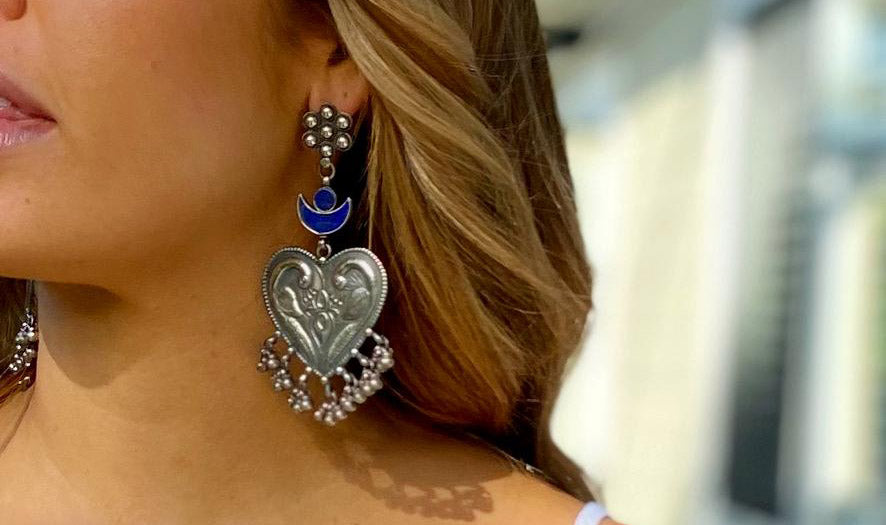Know your Gemstones: What constitutes a ‘Gemstone’?

Have you ever wondered what the difference is between gemstones, minerals, crystals, and rocks? This month’s ‘Know Your’ blog aims to answer that question and share some of our favourite facts about the origins, science, and history of precious and semi-precious stones.
So – what’s in my jewellery?
Basically, almost everything is a mineral; there are a couple of exceptions, but that’s for another blog! Traditionally, we would have said a Gemstone is a mineral that has ‘grown’ crystals, the hard stuff that you shape, cut, polish etc. Today the term is used much more broadly.
Minerals are described by seven different properties: colour, lustre, hardness, streak, cleavage, fracture and structure, or crystal form. We now include so many more types of minerals into the gemstone category that some of these properties don’t relate to them. For example, cleavage - Lapis Lazuli doesn’t have cleavage, so is technically not a mineral crystal. However, we cut it, polish it, and set it into jewellery and the trade calls it a gemstone (and a stunningly beautiful one at that)!


Why do some gemstones have different elements in them?
Isn’t nature amazing!? Yes, sometimes we see different minerals mixed together. It has happened over hundreds of millions of years, as the earth’s crust has been changing and cooling, volcanoes erupting, layers of sediments becoming compressed and buried and so on. Who knows what’s still down there that we still haven’t found!
Going back to our beautiful Lapis, it is actually a mineral soup made up of different elements, Lazurite, calcite, pyrite, sodalite, mica etc. My favourite type of Lapis shows beautiful flecks of the metallic pyrite. In the trade, the finest Lapis is a consistent mid blue colour with no visible inclusions - it’s all a matter of personal taste. There are also instances of two or more very different minerals becoming melded together, such as Rutilated Quartz, Eudialyte or Bolder Opal. These are all very different formations (read: complicated!)
Why do some gemstones come in different colours?
Yes, we do have certain gemstones that have a huge range of colours, most notably Tourmalines, Garnets and Sapphires. So, what’s happening here is we have a basic mineral composition, for e.g. corundum in the case of Sapphire, and when certain impurities are present, the colour varies. The mineral is still a corundum but if chromium (for instance) is present it turns red! Other elements cause the blue colour we usually associate with Sapphires, then we get Yellow, Orange and Pink Sapphires and the amazing, incredibly expensive, Padparadscha Sapphire which is a stunning salmon pink colour. When a Sapphire is a certain tone of red, we have a Ruby!

What is the difference between precious and semi-precious gemstones?
Historically the term ‘precious gemstone’ has related to Diamonds, Emeralds, Rubies, Sapphires and in some cases Aquamarine. What sets them apart are rarity, structure, clarity and colour. They all rate highly on the Mohs scale - Diamond in particular is the hardest natural element known - which makes them very wearable.
However, to flip this on its head, a very high-quality Garnet can be worth more than a very poor-quality Sapphire. I personally I think the terms ‘precious’ and ‘semi-precious’ have become outdated, due to the myriad of different gemstones now available. It’s supply and demand - if there is low availability in the Garnet market and I find a packet of exceptional quality, then it’s very precious to me!

How are gemstones graded?
All gemstones come in varying grades which obviously dictates the cost. However, when something is becoming mined out and availability is scarce, then the price can rocket, even for lower quality pieces. In the early days (i.e. 30 years ago; yes, I’m getting old), I used to buy garnets of great colour in large sizes like 8, 9 10 carats and above. These days, you’d be lucky to find a 2 carat stone that isn’t so dark it looks almost black….
Full disclaimer: I have only a basic understanding of gemstones, though a deep appreciation of them. These are simply bits and pieces I’ve picked up over three decades in the jewellery trade. I’m sure there are mineralogists, geologists and gemmologists out there who would be much more accurate about this amazingly interesting field. But I hope this has helped give you a deeper understanding of gemstones and ignited your interest for these fascinating miracles of Mother Nature!





